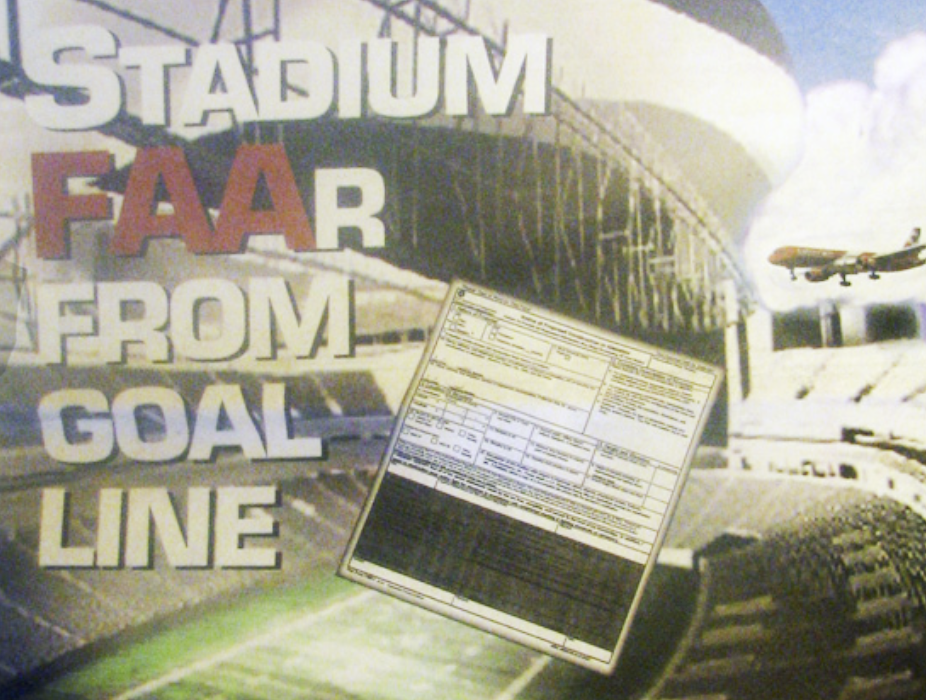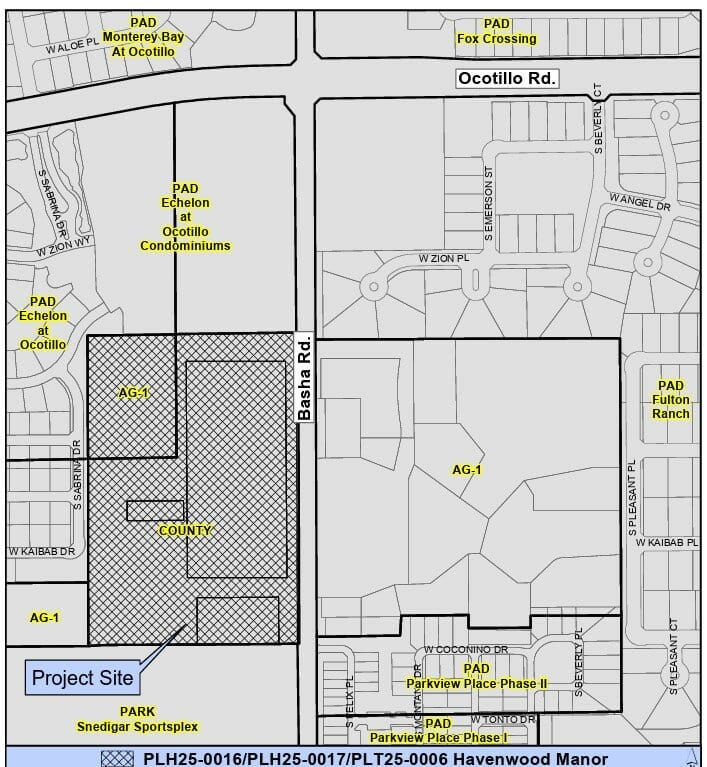Sky Harbor Airport News Illustration by Phil Riske
By Phil Riske | Senior Reporter/Writer
I took a helicopter ride in 2001 with a pilot for ABC 15 over the Washington St.-Priest Dr. area in Tempe which at the time was the proposed site for a new Arizona Cardinals football stadium.
The proposed stadium site was, to say the least, a political and government fireball regarding aircraft noise levels and safety, which I reported on as editor of Sky Harbor Airport News, an independent weekly newspaper.
There were concerns about commercial airliners flying too close to the planned stadium, which was near the end of Runway 26, which lands airplanes from east to west. Stadium proponents claimed the stadium would be to the side of the landing approach, but my helicopter ride showed the site directly in line with 26, which we documents with photos.
Regardless, Tempe’s lobbyist said nothing would stop the $334 million project,
“In the big picture of this construction starting and the stadium going up as planned and on time, it’s totally a done deal,” former Attorney General Grant Woods told us at an airport news conference.
At the time, the Federal Aviation Administration had issued a preliminary opinion the stadium site would be a “hazard to air navigation” as planned.
Also at the time, Hugh Hallman, who was a a harsh critic of the noise Sky Harbor’s jets generate over some of Tempe’s oldest neighborhoods that straddle the Salt River, was a candidate for mayor.
Tempe’s legal action forced jets to make tricky and risky, maneuvers during final approaches until the FAA abandoned the “sidestep” procedure in 2002 after two planes came dangerously close on final approach.
At the same time Hallman was attacking Sky Harbor, he went along with the Cardinals stadium proposal by Tempe that would have placed the facility directly under the final approach to 26.
In the end, Glendale landed what is now State Farm Stadium
Here comes the FAA again
The Federal Aviation Administration was pondering a notable reduction in the maximum height limits of buildings near airports throughout the country to ensure aircraft have enough clearance to continue ascending if an engine fails at takeoff.
The Phoenix Business Journal reported the move was one naysayers say would throw a wet blanket over dozens of future developments throughout Arizona and thousands nationwide at a time when the economy still was struggling to find a solid footing.
Weitzman Group Inc., a New York-based real estate consulting firm says more than 60 of proposed developments that could be hampered in Arizona and include high-profile projects such as DMB Associates’ Eastmark community in east Mesa, Sunbelt Holdings third tower at Hayden Ferry Lakeside along Tempe Town Lake and RED Development’s second-phase apartments above the new Hotel Palomar in downtown Phoenix.
Although it was unlikely a revised policy would be retroactive, the study said 3,850 or so existing structures may see property insurance costs rise, property values decline and any future redevelopment of those sites would be limited, the Journal reported.
Kristine Michalson, spokeswoman for U.S. Rep. Matt Salmon, R-Ariz. sent the newspaper a statement Tuesday:
“Congressman Salmon is concerned about the impact such a regulation will have on local employers and companies. Safety must be a priority. However, if regulations fail to actually increase safety in a measurable way, but limit economic growth and job creation, there must be a better answer. Instead, we should ensure the issue has been thoroughly studied, a cost benefit analysis conducted and that as little impact as possible is imposed on economic projects in the area. Salmon intends to work closely with other congressional members who would be impacted by this regulatory change as well as the FAA to ensure that the public safety is protected while not unnecessarily burdening important regional economic development.”
Scottsdale Mayor Jim Lane wrote a letter to Arizona Congressmen John McCain and David Schweikert in mid-December pleading they do “everything in (their) power” to at least ensure local government and property owners are allowed to voice their opinions before any changes take place.








